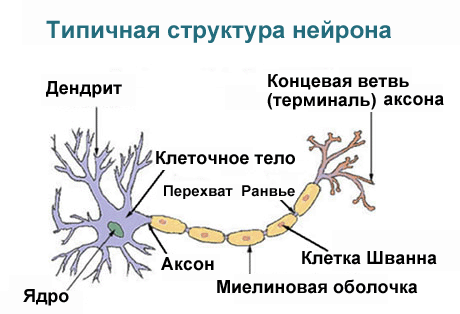The male brain works best at 39
American neuroscientists have published the results of a study of the aging process of neurons in the human brain. They found out at what age the inevitable degradation of nerve cells begins, and also how exactly the axons lose their protective coating of myelin . It starts, on average, at the age of 39. Someone earlier, someone later. It is at this age that the body gradually loses its ability to regenerate myelin, and axons gradually lose their functionality, and the loss of myelin accelerates in geometric proportion with time (U-shaped curve).

Scientists have suggested that it is myelin that is responsible for the quality of the brain. The results of the study were tested on a group of men aged 23 to 80 years, for whom the speed of performing a simple motor task was measured (moving the index finger on the hand with a maximum speed for 10 seconds, which, as neuroscientists know, causes a giant jump in neural network activity and this is immediately visible when scanning the frontal part of the brain), and immediately after the test, myelin levels in each subject were checked. As the scientists suggested, a clear relationship was found between the level of myelin and the efficiency of the entire neural network - both of them reach a peak in middle age.
True, scientists continue to argue about whether one thing really affects the other (if so, then you can start experimenting withdoping for the brain of a new generation), or both processes have a common, different reason. One way or another, but the fact is that it is at the age of 39 that the man’s brain works most efficiently.
Unfortunately, for some reason there were no women in the experimental group, and therefore it is not entirely clear whether the same laws apply to them. Perhaps the peak of brain activity in women is at a different age.
Help from Wikipedia: A neuron consists of a body with a diameter of 3 to 100 microns and processes. There are two types of processes. Axon is a long process adapted to conduct excitation from the body of a neuron. Dendrites are usually short and highly branched processes that serve as the main formation site of excitatory and inhibitory synapses affecting a neuron (different neurons have a different ratio of axon and dendrite lengths). A neuron can have several dendrites and usually only one axon. One neuron can have connections with up to 20 thousand other neurons.
via UCLA Newsroom

Scientists have suggested that it is myelin that is responsible for the quality of the brain. The results of the study were tested on a group of men aged 23 to 80 years, for whom the speed of performing a simple motor task was measured (moving the index finger on the hand with a maximum speed for 10 seconds, which, as neuroscientists know, causes a giant jump in neural network activity and this is immediately visible when scanning the frontal part of the brain), and immediately after the test, myelin levels in each subject were checked. As the scientists suggested, a clear relationship was found between the level of myelin and the efficiency of the entire neural network - both of them reach a peak in middle age.
True, scientists continue to argue about whether one thing really affects the other (if so, then you can start experimenting withdoping for the brain of a new generation), or both processes have a common, different reason. One way or another, but the fact is that it is at the age of 39 that the man’s brain works most efficiently.
Unfortunately, for some reason there were no women in the experimental group, and therefore it is not entirely clear whether the same laws apply to them. Perhaps the peak of brain activity in women is at a different age.
Help from Wikipedia: A neuron consists of a body with a diameter of 3 to 100 microns and processes. There are two types of processes. Axon is a long process adapted to conduct excitation from the body of a neuron. Dendrites are usually short and highly branched processes that serve as the main formation site of excitatory and inhibitory synapses affecting a neuron (different neurons have a different ratio of axon and dendrite lengths). A neuron can have several dendrites and usually only one axon. One neuron can have connections with up to 20 thousand other neurons.
via UCLA Newsroom
